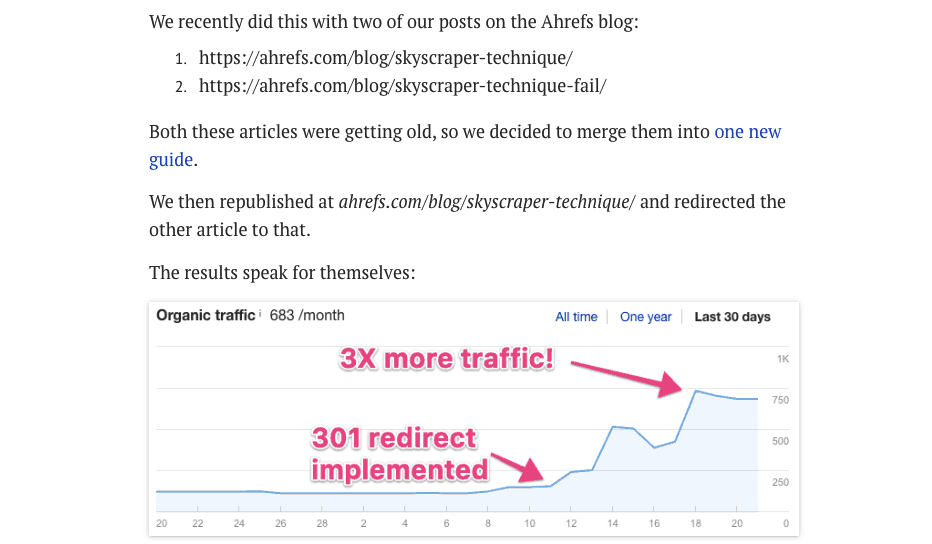You have worked hard on creating your website. You’ve got the greatest idea since sliced bread, and you have been grinding all day every day to present it to the world. You’ve mastered Gutenberg to create an astonishing WordPress site.
Spent hours reading up on design and CSS styles. One too many sleepless nights creating content for your site and debating with yourself whether you should attempt to use some of them as guest posts – because you know you need those links. And then…
Where is everybody?
You feel like you are coming to your own surprise birthday party that you organized, and nobody showed up. It’s just you in your apartment. Traumatizing.
The truth is if you are one-man-band when it comes to your online presence, you’re bound to overlook one aspect of your site or another.
Trying to please #Google to rank you better so that you would get more visitors? There is another technique to try: the Cocktail one.
Your design could be poor. Navigation is really hard, or literally anything – there is a lot to think about when starting out. In this case, the traumatizing experience is a result of bad, or non-existent SEO. Or, you could have been targeting extremely difficult to rank for keywords. There could also be an issue of big names in the industry that have been occupying the first page of Google’s search results, with an army of a team working on its SEO.
Regardless, the truth is, whether you are on the fourth page of Google’s search results or 40th, it doesn’t really matter. Every page other than the first is very much unimportant unless you are a student search for an essay on a very particular topic that you want to copy for your assignment. Nobody really cares about Archduke’s Ferdinand’s wife’s twice removed second cousin’s third son. That’s the company your website is probably keeping since you are hearing crickets.
Table of Contents
- Let’s talk about SEO
- Domain authority and Page authority
- So, I just need to get as many links as I can?
- The Cocktail Technique
- Now, What Are The Ingredients?
- Tools
- Now, Let’s Get To Mixing The Cocktail!
- Back To Your Surprise Birthday Party
Let’s talk about SEO
Search Engine Optimization (SEO) is the key to getting any, or more, visitors to your site. The perfect, well-written, informative and useful content is a must. From there, optimizing your content for Google is another must, and implementing each and every technique that you have available is something you should focus on.
Trust us, there are many. From picking the right keywords to rank for, to getting those backlinks, as mentioned earlier, there are many things you could do. The point is to actually do all of them. So, yes, you should have sent those articles as guest posts. In the oversaturated internet, you need all the help you can get to push your way up on the Search Engine Results Page (SERP).

There is yet another technique that you can use, which will help to bump your content piece up on the SERP. It is called the Cocktail Technique, and it is yet to get overused because it is a bit tricky to pull off. To explain this technique properly, we’re gonna get into some of the other techniques and terms, and explain them first.
Domain authority and Page authority
While these sound a bit self-explanatory, when it comes to authority online, it can get tricky. The truth lies in links, which essentially “pass” the authority from one site to another. It is a bit of word-of-mouth case, with every link you get (mind you, from sites that are already authoritative in the field), telling their readers, visitors, and customers that you also know what you are talking about.
Both of these terms were coined by Moz, and they stand to represent how much positive word-of-mouth, aka authority, aka links, you got from the others. Domain one on a domain level, and page is… well, per page. The rankings go from 0 to 100. From there, it safe to say that the meaning is similar to video games: once you just start your site, you are at level 0, and the better you get at getting links, your score will go up. Naturally, it is easier at the beginning, and it gets more difficult as you go.

But why should you even bother, you might ask. Well, these authority measurements stand in for the likeliness of your ranking on SERPs. That’s right. If you reach 100, you will probably be the first one on Google’s result.
A quick note here: Your competition plays a huge role, too. If there are a bunch of websites in your field, even with similar authority, you might get pushed out of the first page by a bunch of people with just a single higher level to them.
Essentially, the links are helping you present your content better for PageRank. PageRank is Google’s algorithm, which relies heavily on these links to calculate the importance of your site and selects a place for it in Google’s SERP. Of course, nothing with Google is that simple, as it has a bunch of other metrics to calculate where your site should end up on its results, but getting links from websites with high authority, and improving your own, is still one of the key factors.
So, I just need to get as many links as I can?
In a manner, yes. The important thing is to get links from places that already have high authority, meaning that they have the credibility to say that you are good in the first place. Also, you need to make sure that those places are in your niche. If you have an online haberdashery, you won’t get much if a famous cave explorer’s website links to you. Google is smarter than that, and that’s where other metrics we mentioned come to play.
So, it is not like a game of Pokemons. The point is to get all the good ones. This is why you should have sent out all those pitches and attempted to guest posts on any relevant website. You need to improve your domain and page authority, and you need to bump your website up the SERP as soon as possible.
Remember that Cocktail Technique we mentioned earlier? It can help you with your page authority, in a similar fashion. Just this time, instead of going outwards and looking to other sites for help, you should look at your own.
The Cocktail Technique
While it sounds like a tip on how to get drunk in a bar by mixing cocktails, it is far away from that. The Cocktail Technique stands for consolidating two not-so-good-performing articles and turning them into one using 301 redirects. The term “Cocktail Technique” was actually coined by Ahrefs, but it is so catchy, we don’t want to stop using it.
301 redirects, on another note, is a technique used to indicate that a piece of content has moved permanently from one URL to another. For whatever reason, if you need the piece to change addresses (outdated content, new domain, or much more), you need to keep the visitors with you, and that’s why you can’t do without redirects. If there are no redirects set in place, your visitors will end up on an error page instead of on the piece of content they were looking for. Frustration, hitting the back button heading on to the competition is the likely outcome.
So, how do you actually create this cocktail? Lets us give you the recipe you need and actual tools you would need to do so. We’ll throw some examples in, just to be sure you get it right.
Now, what are the ingredients?
Patience is the first. If you are looking to create an article-cocktail, you should do so very carefully. Just blindly redirecting everything stands on the same grounds as haberdashery getting authority from the cave explorer. You need to make sure that the articles you are looking to mix are suitable.

When we say suitable, we mean that it has to fulfill a couple of requirements to achieve any kind of results. Next, you need the proper tools to make it happen.
1. Articles
First of all, as mentioned above, those articles need to have a common theme, topic, and to target the same keywords. Using the haberdashery theme, don’t mix buttons with zippers. Yes, they have a similar purpose, but those things are not the same for your experienced visitors. However, if you have two articles talking about two different types of buttons, the Cocktail technique can help. If one type of buttons are no longer used (or demode), redirecting to the popular button should be the way to go.
The next requirement is that they have to have some page authority already, with enough backlinks to make it worth your while. Just merging two brand-new pieces will yield nothing – you need quality articles to make a proper mix, so pick two articles that have enough backlinks but are not performing so well.
Example of proper articles
To provide you with something tangible to illustrate the appropriateness of articles you would need for the mix, we have turned to another one of our blogs – the UnderConstructionPage Blog.

Not so long ago, Ivan wrote a very detailed article on “WordPress maintenance”. Then, Peter wrote another one on “website maintenance”. Both of these cover the same topic, and in essence, they talk about pretty much similar things: security, SEO, updating the old content, and much more. Ivan focuses on how to do it yourself, while Peter emphasizes the importance of doing so. Both of these articles have the same DA (domain authority), since they are on the same blog, and they have similar PA’s (page authority).
Since Ivan’s article is in much more detail, we’ve decided for the sake of this article to say, redirect Peter’s to Ivan’s article. By doing so, Peter’s article will be telling Google that Ivan knows what he is talking about, so his article should have a higher PA, and ultimately, it will rank better with Google.
However, when we asked Peter about it, it turned out that he is very emotionally attached to his article. Apparently, it contains some SEO practices that were passed on to him by his great-great-grandfather, and we’ll have to use another. Still, if we were doing so, those two articles would have been perfect.
On another note, you could always write a third piece – containing all the necessary information from both of them or update one to incorporate the other.
An article about the outdated button and a new one? Write about trends in buttons through history and redirect both. Regardless of what you decide to do, the same rules for writing good content apply: You need to provide your visitors with high-quality, fresh content. If you create this mix, your visitors will no longer have to read two articles to get the same information.
2. Tools
For this to work, you actually have to create those 301 redirects. There are many ways to do so. We could go on for ages on how to do this by editing .htaccess file, but we’re gonna keep presuming that you are the one-man-band, and you actually don’t have time for that.
So, we’re going to present you with an alternative. Use WordPress plugins! There is an abundance of them out there, of course, as you are very unlikely to need something on your site that WordPress plugins or themes can’t give to you.
Considering that, it is not a shocking thing that there seem to be one-too-many redirect plugins available to you. So just go ahead and pick one.
The 301 Redirects plugin
We’re going to stick to our own 301 Redirects plugin, and you can always follow the example, of course. We know this plugin by heart, we know it works, and that it will get us the job done. And you can get it for free. If you don’t know which plugin to choose and are contemplating to use it too, here is a quick overview of the plugin.

WP 301 Redirects was created because we needed the plugin that will do the job effectively and that will help us create those redirects in no time. There is no fluff about it, in terms of both its size and unnecessary features which you would never need in the first place. It’s the simplest way to create redirects because all you need is to copy and paste the URLs. To speed up the process, there is a dropdown menu that helps select the “redirect to” link without having to search for the particular URL beforehand.
We made sure it lists all of the created redirects in an easy to preview manner, and added a “Hits” tab, for easy tracking of the number of times the redirect was used. Also, it lets you add redirects in bulk and export all the created redirects. We’re currently working on adding the 404 error log because we want to help our users (and ourselves) to find those on-site and handle them before they can do any damage to the site’s user experience.
Now, let’s get to mixing the cocktail!

Now that all the ingredients are prepared, you should go to your 301 Redirects page.
So, if we were to do the articles we mentioned above, all we should do is the following: In the “Redirect from” field, we will add the URL of Peter’s article, and in the “Redirect to” field we’re going to add the URL of Ivan’s article and click save.
And well, that’s all folks! It’s so simple, it doesn’t even deserve a screenshot.
The Taste
Now, we’ve encountered the first and only problem with what we have said so far: even if we did the redirects, it takes time for the results to show!
All things considered, we’re still going to show you the results of the technique. Until we find a suitable article, we’re going to use the original Ahref’s results to show the aftereffect of this mixing action. Just like explained earlier, they made sure to pick two articles with the same topic “Skyscraper Effect”, and merge them into a new one. In a month, they experienced quite a boost in the number of visitors they were getting!

Now, the special spice
Some people take this another step further: they do this on a larger level, by combining two sites into one. They go ahead and find a site in the niche that matches their own site, and then merge the two using 301 redirects.
Again, you can’t just purchase a haberdashery website to improve your cave explorer’s one. The content you are buying should be of high quality, have enough interest, and enough backlinks (or high enough authority) to make it worth your while.
The Sauce
To make it up to you for the lack of our own tangible results for the cocktail technique, we will show you how the Cocktail Technique worked for us. When we stumbled upon the WP Sauce site, we were sure we want it to be the place our visitors can inform themselves about all that is WordPress related: from SEO tips to the best plugins for affiliate marketing.

So, while our authors struggled to pull up a bunch of new articles for the site, we went ahead and recycled some old content we had laying around on www.blog-install.com. Now, if you were to click on that link, you will be instantly redirected to https://wpsauce.com/?ref=blog-install. Plus, we added a UTM tag, to see who used the redirects to find it.
But the truth is, Blog Install was another our site which hasn’t got enough attention from us – meaning that the content was getting a bit outdated. We went through it and handpicked relevant articles from it. We showed them love and rewrote them so that they are updated and fresh.
While the articles were good to start with, we improved them a bit more to ensure that they are bringing more value to our readers. Not only did this help kickstart our new website, but it also got our authors some time to come up with other informative and relevant content.
For example, we decided to keep How to Create the Perfect Logo for Your Site, which was an easy and obvious choice: let’s admit it, the article is perfect. We revamped it a little and published it on our brand new WP Sauce. So far, the redirect brought us quite a number of visitors, apart from the ones reading it straight from WP Sauce! Yay!
Back to your surprise birthday party
No one showed up – and that is entirely okay. In the mountain of invitations coming everyone’s way on a daily basis, yours might have got lost in the crowd. No worries, it will be better next time.
The truth is, the first page of Google is super crowded because everybody wants to go to that party and are working hard to get invited. Google takes a bunch of criteria into consideration to ensure that your piece belongs there: from time spent on site, your competition, backlinking and authority, optimization, site speed, and responsiveness, it is a lot to handle and consider.
There will always be tips and tricks. The Cocktail Technique and the use of 301 redirects are just one of them, and you shouldn’t put all of your eggs in that basket. It sure does help and will help you get a higher spot on Google’s SERP, but don’t expect it to perform miracles.
However, if you combine it with good content, miracles can happen. The truth is, you are writing for your audience. Your job is to provide your visitors with relevant, useful and practical information – something that they were searching for on Google in the first place. If you are able to provide that, word-of-mouth will do its job and Google will also take notice.
So, in other words, the Cocktail technique and 301 redirects are there for you to create even better content for your site, and ultimately, to rank better!


Hey Ivan!
This Cocktail Technique of yours for SEO is really splendid. The way you described how to form contents and embed links were useful
Loved it. Thanks a lot! 🙂